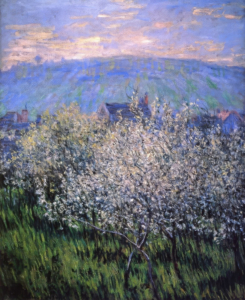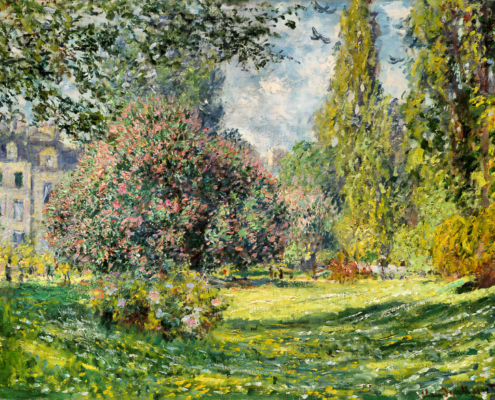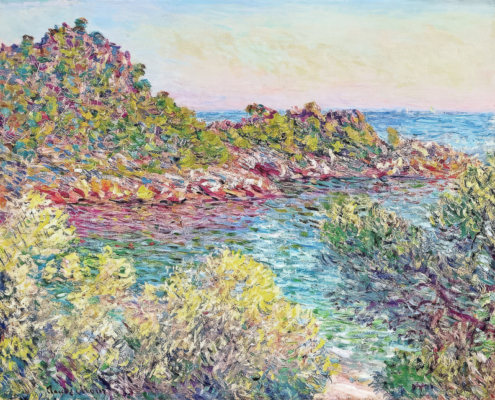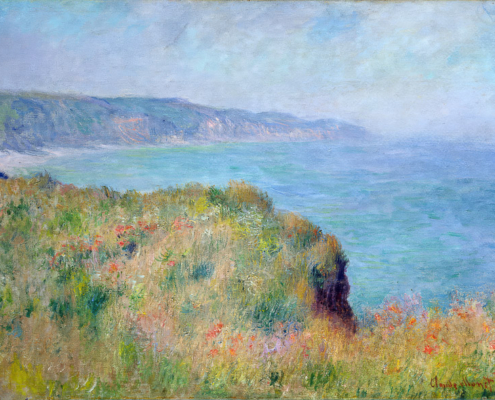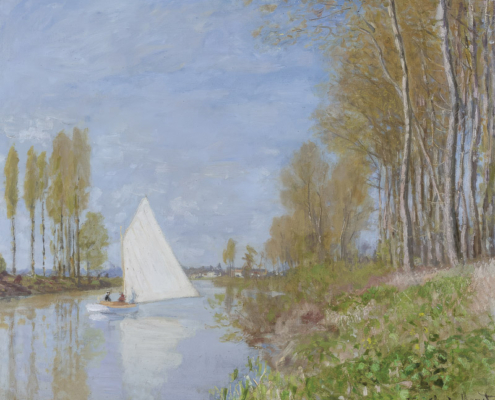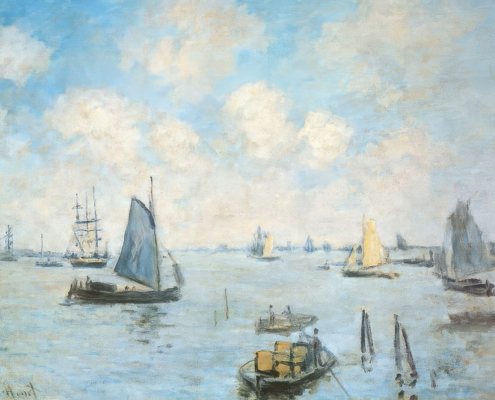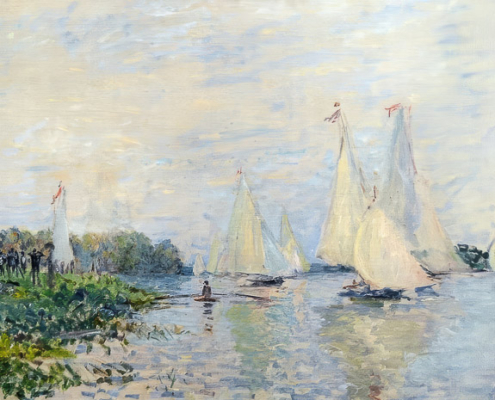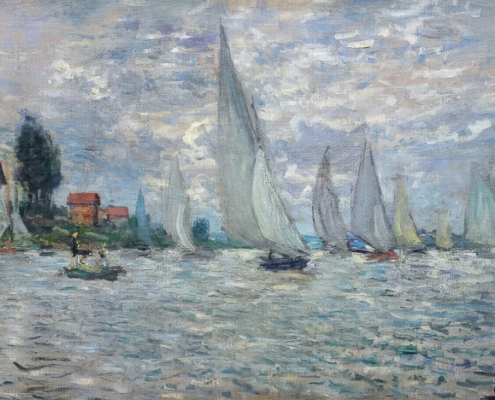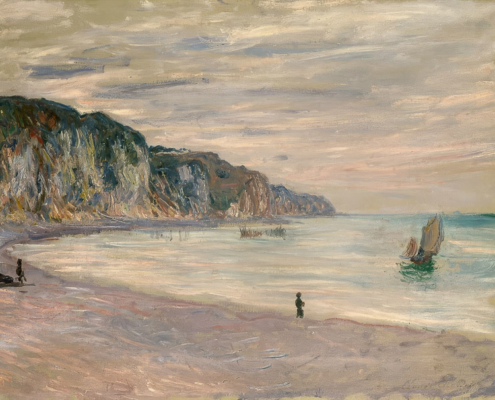Navigating the Realms of Impressionism and Abstract Art: Exploring Connections and Contrasts Through Monet’s Lens
Impressionism and Abstract art, though divergent in their aesthetic principles, share intriguing parallels while embodying distinct approaches to artistic expression. Let’s embark on a journey through these diverse yet interconnected realms, unraveling the similarities, differences, and the enduring legacy of one of the most celebrated Impressionist masters, Claude Monet.
Vintage Claude Monet Wall Art – Mountain View with Blooming Trees.
Heritage European Impressionism Art, Famous Artist.
Is Impressionism the same as Abstract art?
Impressionism and Abstract art represent distinct movements within the art world. Impressionism emerged in the late 19th century, characterized by its emphasis on capturing the fleeting effects of light and atmosphere through loose brushwork and vibrant colors. In contrast, Abstract art, which gained prominence in the early 20th century, seeks to transcend representation altogether, focusing on form, color, and composition to evoke emotions and ideas without reference to recognizable subjects. While both movements reject the rigidity of academic realism, they differ significantly in their treatment of form and representation.
What is common for Impressionism and Abstract art?
Despite their disparities, Impressionism and Abstract art share certain thematic and philosophical affinities. Both movements prioritize the artist’s subjective experience and perception of the world, eschewing rigid conventions in favor of personal expression. Additionally, they both challenge traditional notions of artistic representation, embracing experimentation and innovation in pursuit of new forms of visual language. Moreover, both Impressionism and Abstract art have had a profound impact on the trajectory of modern art, influencing subsequent generations of artists and reshaping the boundaries of artistic possibility.
What is the difference between Impressionism and Abstract art?
While Impressionism and Abstract art share common ground, they diverge in their treatment of form, representation, and aesthetic objectives. Impressionism, rooted in the observation of nature and the sensory experience of the world, retains a connection to recognizable subjects, albeit rendered with a distinctive emphasis on light, color, and atmosphere. In contrast, Abstract art seeks to transcend representation entirely, emphasizing the autonomy of form and color as vehicles for emotional and conceptual expression. Additionally, Impressionism tends to maintain a degree of visual coherence and immediacy, whereas Abstract art often challenges viewers to engage with more abstract and non-representational forms of expression.
Summarizing the commons and differences between Impressionism and Abstract Art
In conclusion, Impressionism and Abstract art represent distinct yet interconnected facets of modern art, each offering a unique perspective on the nature of visual expression and the human experience. While Impressionism celebrates the sensory richness of the world, Abstract art ventures into the realm of the ineffable and the transcendent. Through their shared aspirations and divergent trajectories, these movements continue to inspire and captivate audiences worldwide, reaffirming the enduring power of art to illuminate, provoke, and transcend.
Commons:
- Emphasis on Perception
- Innovation in Technique
- Subjectivity and Emotion
Differences:
- Representation vs. Abstraction
- Objective vs. Subjective
- Historical Context
Monet as an Impressionism artist
Claude Monet, often hailed as the quintessential Impressionist painter, played a seminal role in shaping the movement’s aesthetic principles and artistic legacy. Through his iconic depictions of landscapes, seascapes, and gardens, Monet captured the ephemeral qualities of light and atmosphere with unparalleled sensitivity and virtuosity. His bold experimentation with color, brushwork, and composition not only revolutionized the practice of painting but also laid the groundwork for subsequent developments in modern art.
While Monet’s work is firmly situated within the tradition of Impressionism, it also foreshadows certain tendencies associated with Abstract art. In his later years, particularly during his exploration of the Water Lilies series, Monet increasingly prioritized the expressive potential of color and form over representational fidelity, foreshadowing the concerns and preoccupations of subsequent Abstract artists. While not a practitioner of Abstract art per se, Monet’s enduring influence transcends the boundaries of any single movement, embodying a timeless vision of artistic innovation and creative freedom.

